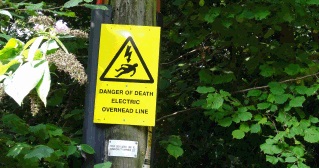
People throughout the United States of America are currently observing National Electrical Safety Month, an annual event that aims to raise awarness of electrical hazards and the potentially tragic consequences thereof. National Electrical Safety Month is organised by the Electrical Safety Foundation International (ESFI), and the initiative has been recognised by, among others, US president Barack Obama. In a message bearing his signature, the president highlights many of the hazards that accompany the use of electricity, going on to state that "it is up to all of us to protect ourselves, our loved ones, and our homes, schools, and workplaces from the dangers of electrical hazards."
While National Electrical Safety Month is an American observance, we at Label Source think that the whole world could benefit from marking the date and thinking a little harder about electrical safety. The closest thing we have in the UK seems to be Electrical Fire Safety Week (held each year in November), but this is both shorter and more specifc than the American initiative. Throughout the month of May, we'll be doing all we can to improve everybody's attitude towards electrical safety, and we'd be thrilled if everybody reading this did the same!
Here are just a few of the ways to boost electrical safety in your home and workplace:
- Leave electrical work to qualified professionals
- Abide by the manufacturer's safety instructions when using electrical appliances
- Use the appropriate safety signs and warning labels to identify electrical hazards
- Keep your electrical cables in good condition and label them to prevent accidents
From now until the end of the month, we'll be using the #ElectricalSafetyMonth hashtag on Twitter and other social networks. Follow @LabelSourceUK now to keep up with our latest posts!
Everyone has the right to a safe working environment. If you are failing to ensure the continued safety and wellbeing of your employees, you could well be liable from a legal standpoint, and - more importantly - you may be putting people's lives at risk.
So, is your workplace up to health and safety standards? Here are 3 things to check:
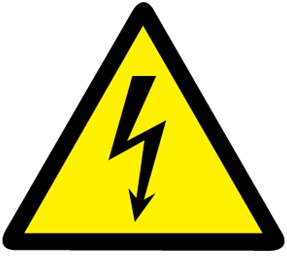
Electrical Safety
Make sure that any electrical hazards in your workplace are properly marked with the appropriate safety signs. You should also label your electrical cables to minimise the risk of an incident. Ensure that all portable electrical appliances have been PAT tested and are safe for use.
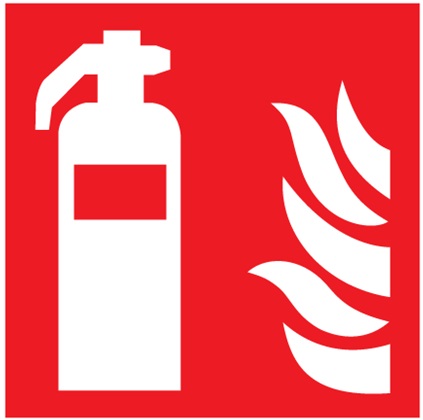
Fire Safety
Would you and your staff members be able to safely evacuate the premises in the event of a fire? Are your fire doors clearly labelled and kept shut at all times? Does your building have easily accessible emergency exits, and if so, are they clearly signposted? Will your fire equipment be easy to locate and use in an emergency situation?
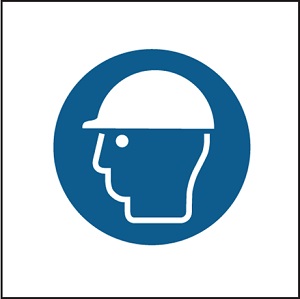
Personal Protection
Some workplaces - such as construction sites - require the use of PPE (Personal Protective Equipment). As the site owner, you must provide your workers with the necessary safety equipment (e.g. hard hats, goggles, breathing apparatus); you must also enforce the proper use of these items at all times and provide clear safety signs to inform people of any PPE requirements that apply to them.
Love it or hate it, health and safety is a hot topic here in Great Britain. New stories - some silly, some very serious - emerge every week, and it can be difficult to stay abreast of everything that's happening in the mad, mad world of H&S from one week to the next.
Fortunately, we at Label Source are more than happy to do the hard work for you. Here are 5 stories that you may have missed this week:
- Fire safety regulations made the news on Wednesday after a London resident stumbled upon a two-foot high emergency exit (pictured above). While the tiny fire escape is more or less unusable unless you're crawling on your belly, the London Evening Standard pointed out that "there are no rules about the minimum height of a fire exit" (although fire safety regulations do stipulate minimum widths). To be fair, the diminutive door is labelled with a Fire Escape - Keep Clear sign, so the proprietors have clearly put some thought into their building's fire safety.
- With economy airlines attempting to widen their profit margins by squeezing more and more passengers onto their planes, concerns have been raised about the safety of their increasingly cramped cabins. Experts have stated that a lack of space could make it difficult for passengers to escape the plane or receive medical treatment in an emergency situation.
- Downton Abbey actor Hugh Bonneville has hit out at 'health and safety culture', which he believes is plaguing modern television production. "If someone is going to look into a mirror," he said, "you need to fill out a long risk assessment form about possible damage to their irises." Bonneville then pointed out that he was exaggerating, but did express his distaste for "acronyms, targets, hurdles, barriers and red tape", which he feels are an obstacle to "getting on with the job of making programmes".
- Sadly, we've yet another gruesome story to add to our machine safety blog post: The Health and Safety Executive this week shared the horrific report of a 19-year-old from Nottinghamshire whose forearm was severed in an assembly line accident in 2013. Mark Marshall was attempting to retrieve a glove from a conveyor belt when the accident happened; the firm he was working for at the time are now in court.
- Finally, a Nestlé factory in Burton has been hit with a health and safety improvement notice after HSE inspectors found a number of issues on the premises. One of the problems was "a lack of signage pointing towards emergency escape routes". Sounds like they need to visit our Fire Safety & Emergency Access department!
Photo from Vincento/Twitter.
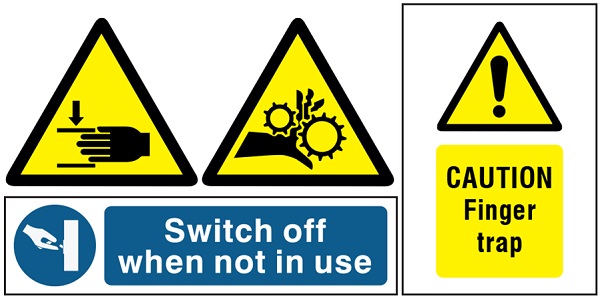
Machines make our lives a lot easier, but they can also be extremely hazardous if used improperly. We've seen lots of gruesome reports in the news lately that reinforce this fact - here are some of the worst:
Warning! These stories contain injury and mutilation - do not read if you are faint of heart!
- A 60-year-old woman from Cheshire lost part of her left index finger because the machine she was cleaning had not been switched off. Her finger was caught in the machine's rotating blades; her employer, Tattenhall Dairy Products Ltd, was fined £7,500 for failing to prevent the incident.
- Roger Small, a 49-year-old man from Staffordshire, was repairing a computer-controlled machine last year when the machine started working and Small's arm became trapped in the inner workings. His arm was broken, and Key Precisions Ltd - the company Mr Small worked for at the time - were handed an £8,000 fine (plus costs).
- A worker in Glasgow needed a metal plate in his wrist after an accident involving a conveyer belt. The man's arm was caught between the belt and a roller; the HSE took his employer to court over the incident, stating that safety guards should have been put in place to prevent workers accessing the machine's 'nip point'.
- Poorly-guarded machinery was also responsible for injuring an unnamed 30-year-old from Tyne and Wear. The man's hand was left severely injured after he attempted to swap two feed belts and got his finger trapped in the machine, which was running at the time of the incident.
If you want to keep unpleasant incidents like these from occurring in your workplace, there are a number of safety measures you must take. Firstly, you should ensure that all workers are properly trained in the safe use of hazardous machinery; secondly, you need to make sure that all machinery is properly labelled with the appropriate hazard safety signs.
Another day, another silly "elf and safety" story. With a solar eclipse due to darken much of Europe for a few minutes tomorrow morning, school chiefs are reportedly planning to keep pupils indoors during the event so as to protect the children's eyes.
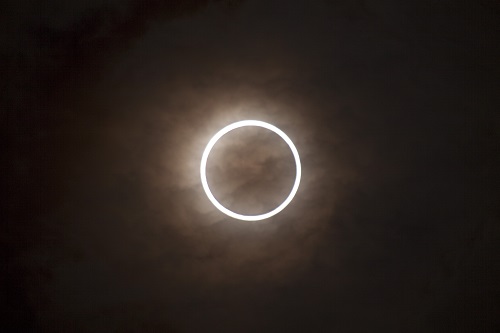
One ring to rule them all...
As usual, the newspapers have painted this as a case of 'health and safety gone mad', but in fairness to the school workers in question, solar eclipses can be very harmful. The sun's rays can damage human eyesight even during an eclipse, and it's important to note that only the northernmost parts of Europe will experience a full eclipse tomorrow - the rest of us will still be able to see part of the sun. In some ways, looking at the eclipsed sun is actually more hazardous than looking straight at the sun on a normal day, because your body's natural reactions (squinting, looking away) won't kick in due to the darkness.
Still, this doesn't necessarily mean that Britain's schoolchildren should be robbed of this opportunity (which, after all, doesn't come along every year). Instead, here are a few quick safety tips for tomorrow's eclipse - remember, health and safety is here to keep you safe, not to ruin your fun!
- Know the dangers. Staring at the sun (even during a total eclipse) can cause irreversible damage to human eyes, scorching the retinas and potentially triggering a variety of ocular disorders and even blindness. If you are taking children outside to enjoy the eclipse, make it clear to them that looking straight at the sun is dangerous, and be sure to explain what may happen if they try it.
- Don't look at the sun (even with sunglasses on!) No commercially-available pair of sunglasses will be sufficient to protect your eyes from direct contact with the sun's rays, so don't even try it. Of course, you can buy special eclipse glasses that are specifically designed for eclipse viewings, but be sure to buy with caution - there's no way to guarantee that every pair of so-called 'eclipse glasses' will actually protect your eyes.
- Make a pinhole camera. This is a time-honoured way to view solar eclipses safely, and it can double as a fun craft project for children. Simply take a piece of cardboard and poke a pin-sized hole in the centre; then, during the eclipse, hold your card up to the sun (remember not to look!) and hold another piece of cardboard underneath. A vision of the eclipse will be projected onto the second piece of card, allowing you to watch as it happens.
- Steer clear of selfies! This is one "elf and safety" warning that's totally justified - many experts are concerned that people will try to take 'selfies' during the eclipse and, in doing so, inadvertently glance up at the sun. We recommend that you stay safe and hold your selfies until afterwards!
Click here for more health and safety blogs from Label Source.